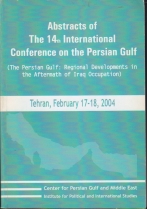Archive
Articles / THE PROSPECTS FOR THE CONSTRUCTION OF THE CASPIAN SEA-PERSIAN GULF CORRIDOR

Azerbaijan State Economic University
Elshan M. Hajizadeh
Global economic growth is encouraged at the contemporary stage mostly by the development of energy resources. Transportation sector, both directly and indirectly appears to play the greatest role in consumption and distribution of energy resources. Growing energetic demands along with other financial and moral needs motivate diversification and differentiation of various spheres of the world transportation sector, structural changes and on top of that the alteration of labor geography division. Sea tankers are the main providers of the shipment of oil and gas resources - the key world economy segment - to the world markets and final consumers. Tankers also perform the duties of key distributors of oil and oil products, liquid and compressed gas. However, sea tankers cannot provide an efficient access from global oil and gas resources location to the world oceans. In fact such circumstances exist in only one place on the face of this Earth - the Caspian basin.
The discovery of significant hydrocarbon resources in the Caspian basin before the USSR collapse and exploration works started at a subsequent stage in a new epochal geopolitical environment resulted in serious changes in global base of energy resources and energy balance. Estimated resources of the Caspian basin reach up to 100 billion barrels or 25-30 billion tons - an interim of the North Sea and Gulf of Persia resources. 7-8 billion tons of hydrocarbons are rated positive resources already. Kazakhstan is believed to have 13-14 billion tons of equivalent fuel, Azerbaijan - 7-8 billion tons, Turkmenistan - 5 billion tons, Russia - 1 billion tons and Iran - 2 billion tons. Even though the dynamics of hydrocarbon resources may change every moment, ongoing exploration works cannot cut the resources as twice from the most pessimistic viewpoint. The Caspian will develop into Europe’s largest provider of energy in the next 50 years. Daily production will grow up to 5 million barrels of oil from year 2005 on.
Multiple pipeline routes providing Caspian oil and gas resources delivery to the world markets are currently presented with Tengiz-Novorossiysk, Baku-Novorossiysk and Baku-Supsa oil pipelines. Construction of Baku-Ceyhan oil pipeline is currently underway, while building of Baku-Erzurum gas pipeline is becoming a commercial reality. These main oil pipelines do not reach to end consumers and oil shipments are lifted by tankers in sea ports. The main problem here is that the Caspian basin does not have a direct access to oceans.
The inland Caspian basin only has access to the world oceans through Volga-Don canal in the north. Freezing of canal waters during winter months and numerous straits and passes on the way to the world ocean are great problems to navigation. The situation is further complicated with crossing several state borders and subsequent losses of time. The best solution is building a big canal linking the Caspian basin and the Gulf of Persia through the territory of the Islamic Republic of Iran. The idea is not new. There were plans to link the Caspian basin to southern oceans in the past and this problem is still remaining urgent at present. Our objective is doing a feasibility study and justifying social effectiveness of the large-scale project. The contemporary scientific-technical achievements and innovations, constructive surveys and estimations provide certain opportunities for realization of this project. Despite the project demands multi-billion investments, the canal building in a new geopolitical environment will give a promising alternative of oceanic access to three littoral states (Kazakhstan, Turkmenistan and Azerbaijan) who did not previously have direct access to land waters, and closer integration into world economic system. The project implementation will extend economic, trade, transport and even socio-cultural relations, and intensify mutually beneficial regional cooperation. The project will also encourage the formation of appropriate economic infrastructure in sea basin and coastal areas. The prospect will also affect tourism and private sector development and improve social welfare. We believe the most real and promising way of implementing the 21st century’s most significant project at the institutional level is referring to the national interests of Islamic Republic of Iran and enlisted support of the World Bank of Islamic Development and a consortium of regional states.
Geostrategical and socio-economical advantages of building a canal linking the Caspian Sea and the Gulf of Persia are the following:
- Ø Multi-aspect integration effect;
- Ø Institutional importance;
- Ø Tourism development;
- Ø Transit route alternative to the Great Silk Road;
- Ø Formation of new business infrastructure in the region;
- Ø Military-strategic object inside the country;
- Ø Area of high socio-environmental liability.
The range of foregoing effects makes project efficiency highly promising. Greatest benefits will be earned by Iran because the canal will entirely pass on Iranian territory. This presents another strategic regional phenomena preventing one-sided globalization.
68.The Prospects for the Construction of the Caspian Sea-Persian Gulf corridor. The 14th International Conference on the Persian Gulf: «ThePersian Gulf: Regional Developments in The Aftermath of Irag Occupation».Tehran.February 17-18, 2004. Center for Persian Gulf & Middle East. Institute for political and International Studies. 0,2 v.q.





